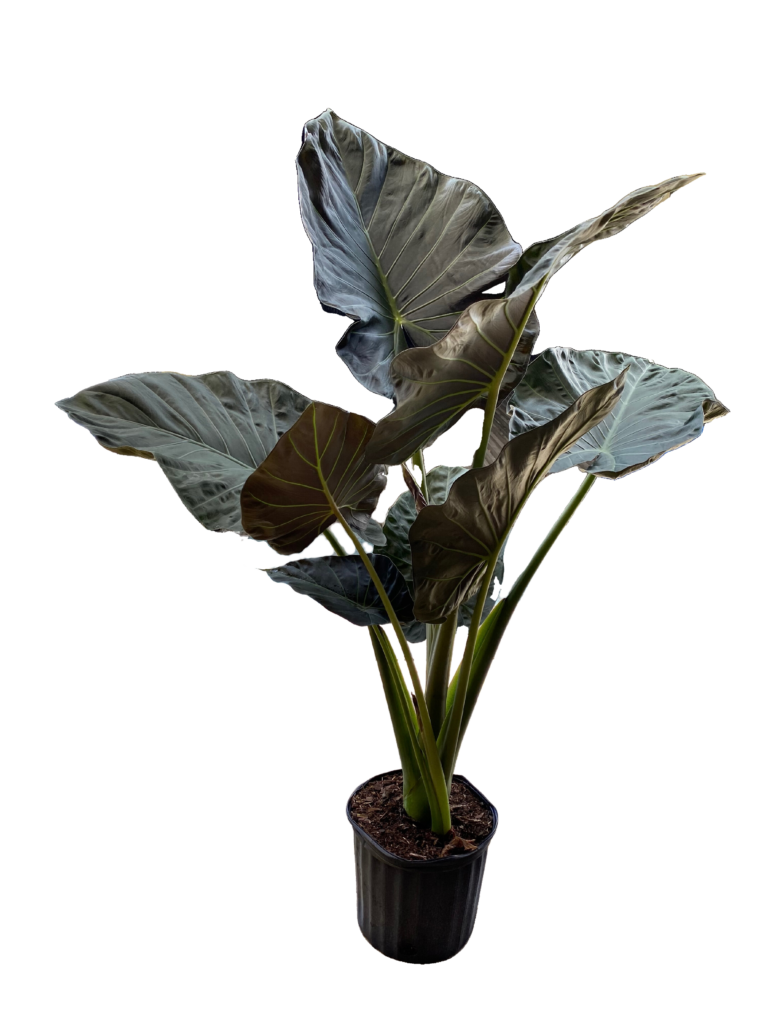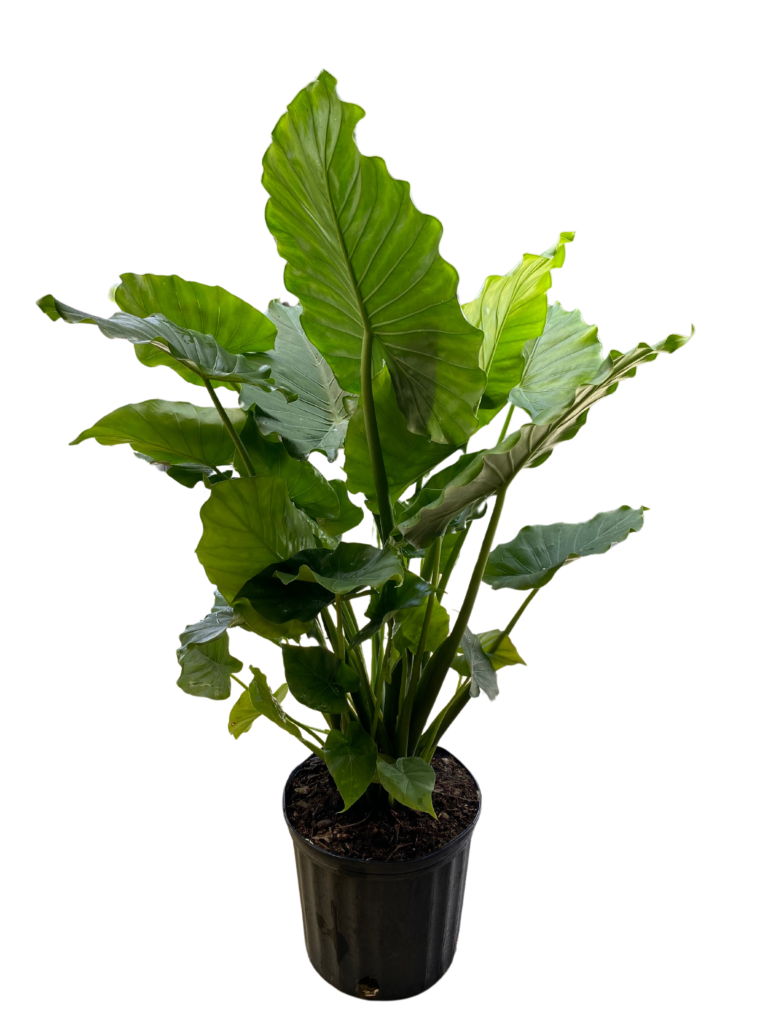

Alocasia plants, often referred to as “elephant ear” due to their large, heart-shaped leaves, are popular houseplants known for their striking foliage. We carry a variety of Alocasia available in 10″ pots. Here’s a closer look:
Appearance
- Leaves: Alocasia leaves are typically large, glossy, and can be arrow-shaped or heart-shaped, with prominent veins. The leaves can vary in color, from deep green to variegated patterns.
- Height: Depending on the species, they can range from a couple of feet to over six feet tall.
Common Varieties
- Alocasia Polly: Known for its dramatic, arrow-shaped leaves with prominent white veins.
- Alocasia Zebrina: Features distinctive zebra-striped stems and large, striking leaves.
- Alocasia Amazonica: A hybrid that combines features of several species, recognized for its unique leaf shape and striking patterns.
Care Requirements
- Light: Prefers bright, indirect light but can tolerate some direct sunlight. Too much direct sun can scorch the leaves.
- Watering: Keep the soil consistently moist but not soggy. Allow the top inch of soil to dry out between waterings.
- Humidity: Thrives in high humidity; misting or using a humidifier can help keep it happy.
- Temperature: Enjoys warm conditions, ideally between 65°F and 80°F. Avoid cold drafts.
Fertilization
Fertilize during the growing season (spring and summer) with a balanced fertilizer every few weeks.
Common Issues
- Pests: Watch for spider mites, aphids, and mealybugs. Regularly inspect the undersides of the leaves.
- Yellowing Leaves: This can indicate overwatering or insufficient light.
Propagation
Alocasia plants can be propagated through offsets or divisions during repotting.
Toxicity
Note that Alocasia is toxic to pets if ingested, so it’s best to keep it out of reach of curious animals.
If you have any questions, feel free to call us at (352) 735-8350 or come by the nursery. Our hours are Monday-Friday 8-5 p.m.
